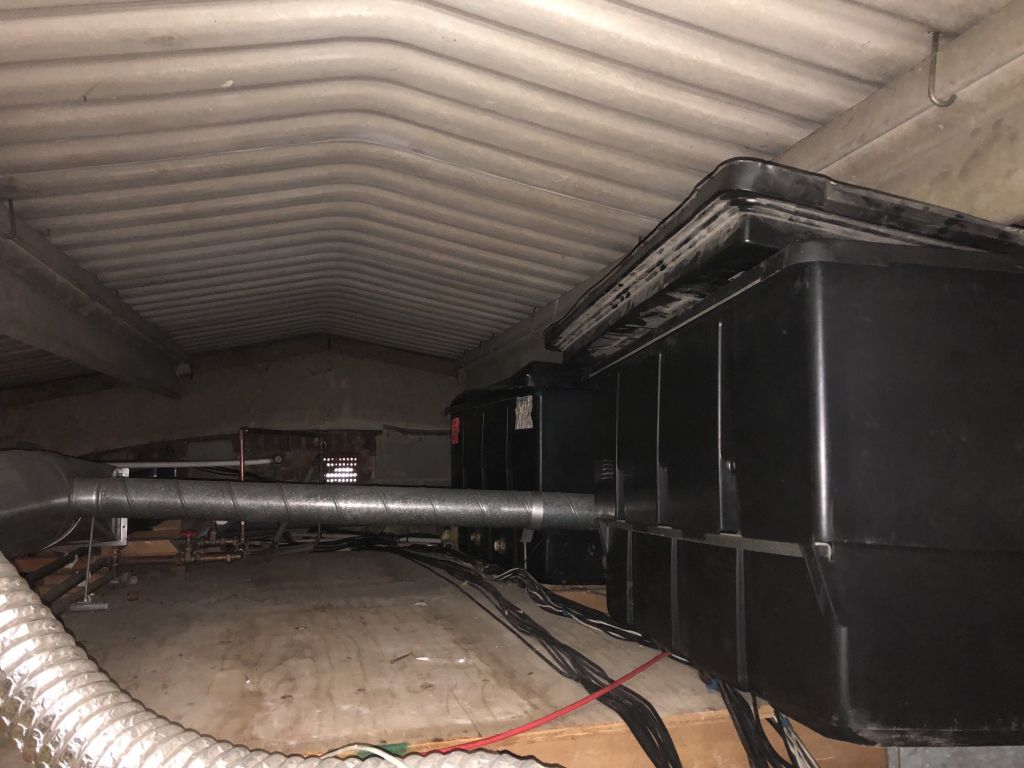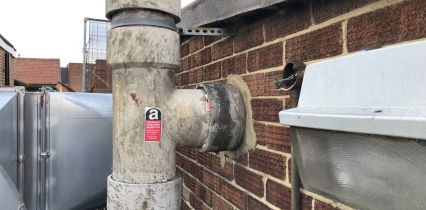Where is asbestos found?
Last Updated on 4 July 2023

An example of where asbestos can be found – old cement bonded asbestos roof sheets in a commercial building
Where is asbestos found in nature?
Up until around late 1999 when asbestos was banned in the UK, it was, and still is pretty much considered ubiquitous in the built environment. In order to give that some ‘numbers’, approximately 90% of all properties we survey as a practice are found to contain some form of asbestos product.
However, let’s start at the beginning…….
Asbestos is a mined silicate mineral that occurs in rocks. Formed by volcanic activity, the mineral occurs in veins like other more well known minerals such as quartz. The three rock types serpentinites, altered ultramafic rocks, and certain mafic rocks are where asbestos is most frequently found. Metamorphosed dolostones, metamorphosed iron formations, carbonatites, and alkalic intrusions are additional rock types that are known to contain asbestos.
Its not very often asbestos is seen in its natural ‘raw form’ in the buildings we live and work in. This is why we generally use the phrase ‘asbestos containing material’ or ACM for short.
Asbestos has been added to in excess of 4000 products over the last 100 years, and these come in many forms. Some of these can be higher risk products such as pipe insulation or sprayed applications. Some can be low risk products such as where the asbestos is added to bitumen, adhesives and putty.
What type of buildings may contain asbestos materials?
Since 1999, all types of asbestos have been banned from importation, supply, and use in the UK; the amphibole kind has been banned since 1985. Serpentine (white) asbestos is substantially less dangerous than amphibole (blue and brown) asbestos.
What is important to remember is that prior to the asbestos ban in 1999, asbestos (ACM’s) were used across all types of building stock from commercial to residential property, which is why it can still be found today.
In the ‘commercial’ sector many more people are aware of the risk from asbestos, particularly during construction or building works, although the level of awareness is still not where it should be. However, in the residential or domestic setting, the levels of awareness are extremely low.
Before anyone undertakes work to your property (assuming it was built before 2000 when asbestos was banned) an appropriate asbestos survey should be conducted prior to the start of the work. Infact, this is a legal requirement to protect homeowners and the tradesmen who undertake such work. Additionally, the tradesmen should also have completed asbestos awareness training.
All asbestos works are presided over by the Control of Asbestos Regulations 2012. These outline how we can protect persons from being exposed to asbestos through the course of their work and every day activities. Subsequently, If you work in a building that contains asbestos, there is a legal duty to manage the material. This is known as an asbestos management plan.
Asbestos Can Lead To Occupational Asbestos Related Diseases
It’s also important to remember that asbestos is still the largest cause of occupational mortality in the UK. In simple terms, you are more likely to die from asbestos disease due to working, than any other reason.
Exposure can come through the type of occupation (builders, tradesmen etc.) or from activities around you or from the building we occupy, where the material is not being managed properly.
Asbestosis is lung scarring due to continued asbestos exposure. Mesothelioma is generally a terminal illness that can occur even with low levels of exposure.
Currently, the UK has one of the highest rates of Mesothelioma in the world when calculated ‘per head of population’.
Where is Asbestos Found in Old Buildings?
From 1930 to about 1980, a lot of building materials containing asbestos were used, especially from the 1960s onward. As a result, homes, apartments, industrial and commercial buildings constructed or renovated at this time may contain asbestos materials.
You might encounter asbestos while working with many of the typical materials used in the construction industry, as it’s estimated that asbestos is still lurking in around 1.5 million properties throughout the UK.
Asbestos can be found in/on or around the following materials in older homes and old buildings, both residential and commercial:-
1. Floor tiles
A common flooring option that is now frequently disguised under carpets. Very comparable to contemporary vinyl floor tiles; frequently calls for testing.
2. Wall panels and boards (AIB)
Partition walls, panels in fire doors, lift shafts, ceiling tiles, soffits, and panels below windows are common sites as asbestos was used for fire proofing. It might be challenging to tell ordinary building materials apart from non-asbestos ones.
3. Sprayed Coatings
Sprayed onto steel for fire protection on the underside of roofs. Usually rough and grey or white in colour, but frequently painted over.
4. Loose fill Insulation
Cavity walls, spaces under floors, and roof voids are frequent locations. Loose and fluffy in appearance, frequently white or blue-grey in colour.
5. Textiles and Composites
Frequently found places for asbestos include fuse boxes, old fire blankets, and heat-resistant gloves. Window sills, bathroom panels, and toilet cisterns and seats can all be made of asbestos composites.
Asbestos paper is used as a liner for metal cladding and underneath tiles.
However, these are not distinctive in appearance and frequently resemble their contemporary versions; sp specialised identification is frequently required.
6. Textured Decorative Coatings
Frequently used to create decorative finishes on walls and ceilings. They were initially white in colour but have frequently been painted over. Usually a hard finish.
7. Lagging
Asbestos can be frequently found around pipework and in or on heating equipment, such as boilers or calorifiers. A fibrous material with a variety of looks, frequently flaking and powdering easily. It is often overpainted frequently.
8. Asbestos Cement
Used for a variety of items, such as flues, wall cladding, gutters, and roof panels. Products are frequently grey in colour, hard, compacted, and shaped into products.

Commercial Building – Old asbestos cement flue, cowl and textile rope seals to the joints
Indeed, the list of where asbestos is often found is not only very long, but it is still being added to as time passes. As you can see from this article, asbestos can be lurking in almost any part of a building, or indeed the land around it.
Contact us for asbestos advice
It is important to understand the law, conduct appropriate surveys and testing and get you and your staff trained. RB Asbestos have been doing this for thirty years across the UK. If you need advice it costs nothing. So contact us today…..
If you need asbestos advice in relation to any properties you own, maintain or control, or where asbestos can be found, then please contact us on 0800 141 2676, email us at info@rbasbestos.co.uk or fill in the form below.

